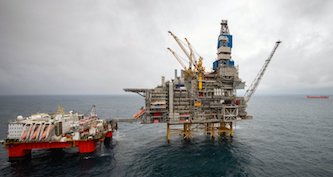Norwegian state-owned energy giant Equinor and its partners on Thursday announced first oil from the massive Mariner field in the UK North Sea.
The field is expected to produce more than 300 million barrels of oil over the next 30 years.
Mariner is located on the East Shetland Platform of the UK North Sea, approximately 150 kilometres east of Shetland and 320 kilometres north-east of Aberdeen.
Mariner is one of the largest industrial projects in the UK in recent years.
A gross investment of more than $7.7 billion, the development will support more than 700 long term jobs and generate significant revenue in the North Sea supply chain for decades to come.
Contracts worth more than $1.3 billion have been awarded to UK suppliers since the project started.
“The start-up of Mariner, the first Equinor-operated oil field on the UKCS, establishes our foothold in the UK and reinforces our commitment to be a long-term energy partner,” says Hedda Felin, senior vice president for UK and Ireland Offshore in Equinor.
Equinor said: “The Mariner reservoirs have up to 3 billion barrels of oil in place, a 50% increase on what was originally assumed, and the estimated recovery rate has already been increased by 20 percent.
“Mariner is expected to produce annual average plateau rates of around 55,000 barrels of oil per day and up to 70,000 barrels of oil per day at peak production.”
Equinor is the operator of Mariner with 65.11% equity. Its partners are JX Nippon (20%), Siccar Point (8.89%) and ONE-Dyas (6%).
Anders Opedal, executive vice president for technology, projects and drilling in Equinor, said: “By gathering and interpreting new seismic data we have improved our understanding of the reservoirs.
“This has resulted in fewer and better placed wells and increased resources since the project was sanctioned in 2012.
“With the significant volumes in place, we see clear potential to further increase the oil recovery from the Mariner field and will proactively seek opportunities to do so through the application of new technology, additional drilling and future tie back opportunities.”
